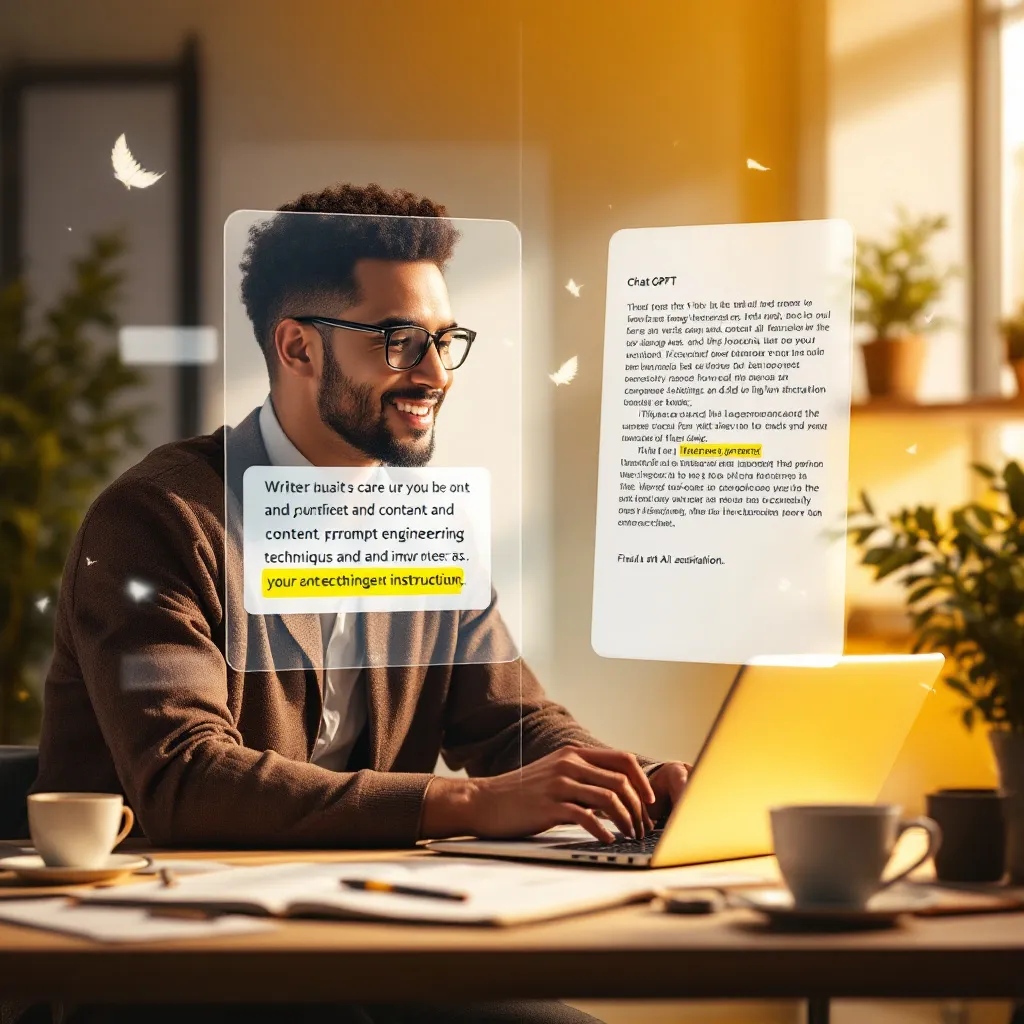ChatGPT has revolutionized how we approach writing tasks, from crafting professional emails to generating creative content. But the difference between mediocre and exceptional AI-written content often comes down to one crucial element: the quality of your prompts. This guide will help you harness ChatGPT’s writing capabilities through effective prompt engineering.
Understanding ChatGPT’s Writing Capabilities
ChatGPT excels at generating structured text, brainstorming ideas, and refining drafts by analyzing patterns in its training data. Its key strengths include:
- Idea generation: Producing multiple topic angles in seconds for essays or marketing copy
- Tone adjustment: Shifting seamlessly between formal reports and casual blog posts
- Structural support: Creating detailed content outlines and frameworks
Despite these capabilities, it’s important to recognize that ChatGPT has limitations, particularly with factual accuracy. According to research on ChatGPT’s limitations, all AI-generated content requires human verification to ensure reliability.
Crafting Effective Prompts for Writing Tasks
The quality of your output depends directly on how well you craft your input prompts. Grammarly’s guide to ChatGPT prompts recommends a framework that includes:
The CRAFT Framework for Writing Prompts
- Context: Provide background information and purpose
- Role: Assign a specific perspective or expertise (e.g., “Act as a marketing director with 15 years’ fintech experience”)
- Audience: Define who will read the content
- Format: Specify the structure and presentation
- Tone: Set the appropriate style and voice
Before and After Prompt Examples
Weak prompt: “Write about leadership”
Result: Generic, surface-level content with little practical value
Strong prompt: “Create 5 case studies comparing healthcare vs. corporate leadership styles using Blake/Mouton’s Managerial Grid. Target audience is mid-career professionals seeking to transition between sectors. Include specific examples from each industry.”
Result: Detailed, specific content with actionable insights
This transformation demonstrates how specificity yields significantly better results, as confirmed by studies on effective ChatGPT usage.
Optimizing ChatGPT for Different Writing Formats
Different content types require tailored approaches to prompt engineering:
Business Writing Applications
For professional emails and documentation, try prompts like:
- “Draft a follow-up email to a potential client who missed our scheduled call. Maintain a professional but warm tone, express understanding of their busy schedule, and propose three alternative meeting times.”
When creating marketing copy with ai writing generator free tools like ChatGPT, specificity is key:
- “Write 3 Call-To-Action variations for a SaaS startup targeting small businesses. Focus on solving inventory management pain points. Keep each CTA under 10 words. Convey urgency without being pushy.”
Creative and Content Writing Applications
For blog posts and articles:
- “Write an introduction for an article about sustainable gardening practices. Target audience is urban apartment dwellers with limited space. Use an encouraging, accessible tone that makes sustainable gardening seem achievable even with space constraints.”
When using ChatGPT as an ai letter writer free resource for creative writing:
- “Expand this metaphor: ‘The interview was a battlefield.’ Develop it into a 150-word paragraph for a job seeker’s blog post about challenging interview experiences.”
Editing and Refining ChatGPT-Generated Content
The initial output from ChatGPT should be considered a first draft that requires refinement. Use these iterative commands to improve quality:
- “Identify any generic statements or clichés in paragraphs 2-3 and replace them with more specific, original phrasing.”
- “Simplify the language in the technical section to be understood by someone without industry knowledge.”
- “Check for consistency in the tone and perspective throughout the document.”
Common Quality Issues to Watch For
- Repetitive phrasing and redundancy
- Overly formal or generic language
- Factual inaccuracies or “hallucinations”
- Inconsistent perspective or voice
For job seekers, learning to edit AI-generated content is especially valuable when using tools like an ai job application bot or creating an ai email for job application.
Ethical Considerations and Best Practices
As you leverage ChatGPT’s writing capabilities, remember:
- Transparency: Always disclose AI-assisted content when submitting work in academic or professional contexts
- Verification: Cross-check factual information with reliable sources
- Originality: Use AI as a starting point, then add your unique insights and perspective
- Balance: Find the right mix of AI efficiency and human creativity
When working on important documents like a cover letter generator output, remember that personalization is crucial. Even a simple cover letter sample needs your personal touch to be truly effective.
Specialized Applications for Job Seekers
ChatGPT can be particularly useful for job application materials. Consider these specialized approaches:
- For creative industries, explore how to craft a funny cover letter that showcases personality while maintaining professionalism
- When showcasing creative work, use ai prompts to use when writing a cover letter that highlights your unique capabilities
- For visual fields, learn how to create an effective portfolio cover letter that complements your work samples
Tools like ResuFit offer specialized assistance that goes beyond generic AI writing, providing tailored support for job seekers with ATS optimization and professional templates.
Conclusion
Mastering ChatGPT for writing tasks is largely about crafting effective prompts that specify context, format, audience, and tone. By following the frameworks outlined in this guide, you’ll produce higher-quality content while avoiding common pitfalls.
Remember that AI writing tools like ChatGPT are most effective when viewed as collaborative assistants rather than replacements for human creativity and judgment. The most successful approach combines AI efficiency with human insight, creating content that’s both technically polished and authentically engaging.
Whether you’re using ChatGPT for business communication, creative projects, or ai cover letter generation, these prompt engineering techniques will help you achieve consistently better results.

